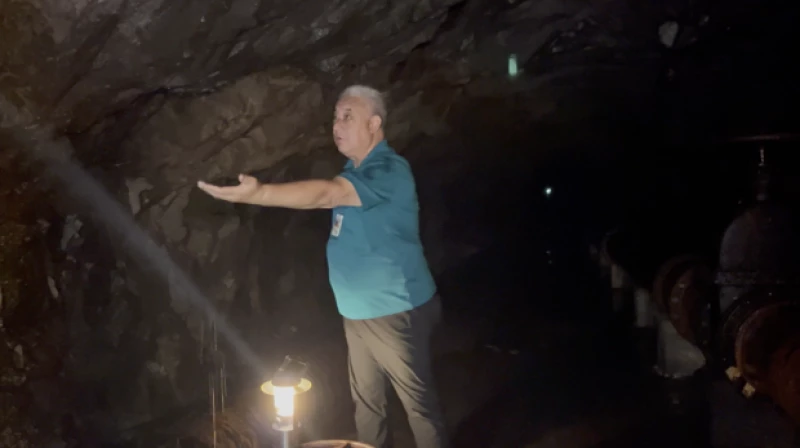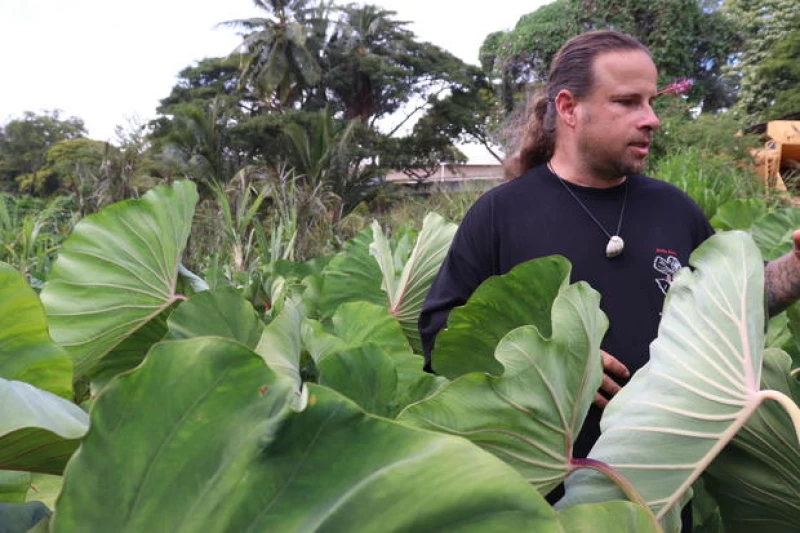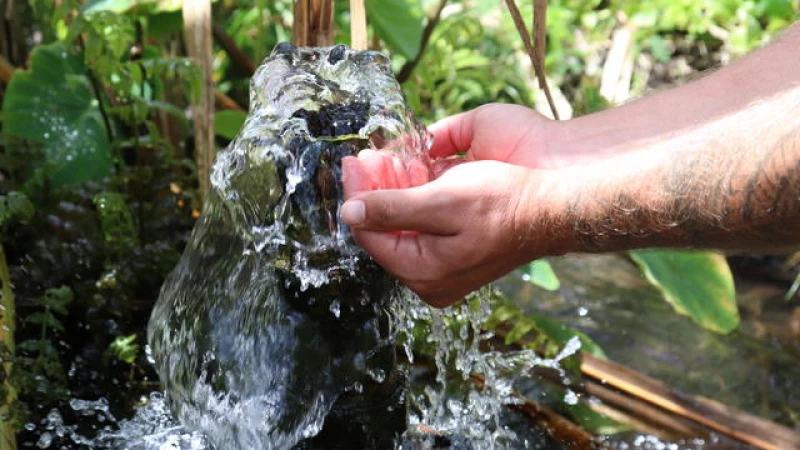Water is the essence of life in Hawaii, as the saying goes, ola i ka wai, which means "water is life." This sentiment not only reflects the importance of water on an island but also the significance of water for all living beings. However, the third-largest island in Hawaii, O'ahu, is facing a serious threat to its freshwater source from multiple angles, putting the community in jeopardy if action is not taken soon.
Despite being surrounded by the vast ocean, O'ahu does not have easy access to freshwater. The island relies on an underground aquifer for its water supply, a source that is replenished through a natural process that takes about 25 years for a single drop of water to travel from the sky to the aquifer.

In recent years, O'ahu has been experiencing a series of challenges that are compounding the water crisis. These challenges include decreased rainfall, resulting in severe droughts, as well as contamination of water systems due to jet fuel leaks and PFAS chemical spills. These issues have significantly reduced the available water for local residents, with many pointing to tourism as a factor exacerbating the situation. Just a few months ago, the island welcomed the opening of the world's largest surfing wave pool, which uses freshwater, adding to the strain on the island's already limited water resources.
"They're not using it to drink or to support life, they're using it to make money. They're commodifying it," said Healani Sonoda-Pale, who is Native Hawaiian and a member of advocacy group O'ahu Water Protectors. "… We are on the verge of a greater catastrophe."
"We are in a water crisis, that has to be made very clear," Wayne Tanaka, director of Sierra Club of Hawai'i, told CBS News, saying that if the reasons for this crisis aren't soon addressed, "We may come to a point where we have to decide … who gets water and who doesn't."
Surrounded by water, Oahu runs dry
On an island, rain is essential.
Statewide, rainfall averages range widely, from just 8 inches to around 400 inches a year, Thomas Giambelluca, director of the University of Hawaii at Mānoa Water Resources Research Center, told CBS News. There is a massive difference just minutes apart. Some areas are extremely dry, while others have the wettest climate in the U.S.
At the university campus where CBS News spoke with Giambelluca, the average yearly rainfall is about 60 inches a year, while nearby Waikiki, two miles away, gets 20 inches.
Water supplies depend on that rainfall, with drier areas having a smaller supply. But those drier areas also face higher demand, as they are where tourists flock and many locals reside. And because the drinking water supply is almost entirely from groundwater, shifting weather patterns can pose a major problem.
"The challenge lies in transporting water from its source to where it is needed," Giambelluca expressed. "When the rain fails to materialize, we are left without a backup plan. We cannot simply import water from a neighboring state."
Presently, the entirety of O'ahu is facing a classification of "abnormally dry," as indicated by the U.S. Drought Monitor. Giambelluca noted that severe and prolonged droughts, which necessitate water conservation efforts, are not uncommon. While the option of desalinating ocean water exists, he emphasized that it is not the preferred method for obtaining drinking water.
"Desalination is a highly energy-intensive process, which contradicts our objectives of reducing reliance on fossil fuels and cutting emissions in Hawaii," he explained.
With global temperatures on the rise, the situation is expected to worsen not only on O'ahu but throughout Hawaii.
"Hawaii has been experiencing increasing aridity, especially since the 1980s," stated state climatologist Pao-Shin Chu. "The stretches of consecutive dry days are becoming more prolonged. This trend is unmistakable."
However, the concern extends beyond drought. Elevated global temperatures also lead to more intense precipitation, resulting in heavier rainfall over shorter periods. According to Giambelluca, this does not necessarily aid in sustaining the water supply, as the steep terrain will direct the excess water into flooding, and the rising sea levels will impede rainwater from infiltrating the aquifer. The encroaching seas are already causing significant erosion along the coastlines.
Giambelluca provided an explanation stating that with the rise in sea levels, the ocean will seep into the underground freshwater system. This infiltration will physically displace the freshwater resource while also penetrating wells and other elements of the water supply system that will require adjustments.
"It's already affecting those water systems," Giambelluca said. "...There's no question that climate change is going to make problems caused by other factors worse."
Some evidence suggests that post-2030, there will be a reduced amount of groundwater available for extraction, as mentioned by Chu, who added, "that's going to be a problem."

"Without water, there is no life"
Anthony Deluze is already facing this issue. He oversees farmland on O'ahu, situated amidst Pearl Harbor, a highway, and a shopping center. His land relies on spring-fed water, primarily used for cultivating taro, a root vegetable essential to Native Hawaiian food and culture. However, the challenges posed by climate change have made taro farming significantly harder for his family and community.
"The biggest challenge is water," he expressed. "...Without water, there is no life."
Deluze has been managing the land for over a decade, but in the last five years, he noticed a substantial drop in the water table, reducing the available freshwater while allowing more seawater intrusion. Coupled with persistent drought conditions, he found himself with less than half the required water to sustain his crops adequately.
"A healthy lo'i [water taro] system needs about 250,000 gallons per day per acre for it to be healthy," he said. "... We were probably getting, in the summertime, about 35,000 per day. And if we're lucky, maybe about 40- to 45,000 in the wintertime, per day. And this is three acres, so we're not even hitting a fraction of what we need."
But it's not just a lack of water, it's a lack of clean water.
"Water quality and water quantity are tied together," Giambelluca said. "...Water contamination is always going to impact water quantity, water availability."

Across the highway from Deluze's farm lies Pearl Harbor and Joint Base Pearl Harbor-Hickam, where in November 2021, there was a jet fuel leak in the Navy's World War II-era underground storage tanks. Nearly 20,000 gallons of jet fuel leaked out of the Red Hill Bulk Fuel Storage Facility, contaminating the base's water system and sickening thousands of military families and locals, many of whom say they are still reeling from the health impacts.
The Board of Water Supply instantly had to shut down three wells that supply water to the island, as the aquifer sits just below Red Hill. A year later, that same facility saw a major leak of 1,300 gallons of AFFF, a fire suppressant that contains PFAS, otherwise known as "forever chemicals."
"We can't farm with fuel; we can't live, period," Deluze said.
The military has successfully addressed the majority of the misplaced fuel and chemicals, although there are concerns among officials that some of these substances may have still made their way into the environment.
"Red Hill... was the root cause of this situation," remarked Wayne Tanaka from the Sierra Club in an interview with CBS News.
"The potential loss of our water supply would have far-reaching consequences, impacting not only the present but also future generations," Tanaka added.






